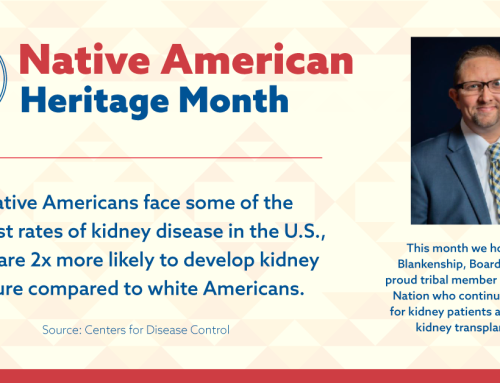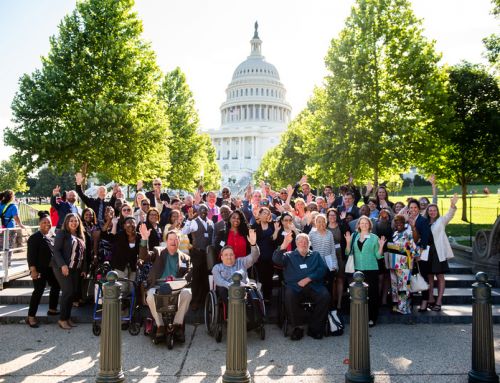In late August, DPC submitted comments to the Center for Medicare and Medicaid Services (CMS) on its payment-setting rule for dialysis facilities in 2015. The rule keeps next year’s payments for dialysis level with this year’s, following a mandate from Congress, but makes some changes to the ESRD Quality Incentive Program (“QIP”) that reduces payments to the lowest-performing facilities. Here are highlights of proposed changes along with DPC’s commentary:
Patient Satisfaction Survey Scores To Count Toward QIP Payment Reductions:
For several years now, dialysis facilities have administered the “CAHPS” survey of patient experience to patients. However, under current regulations, dialysis facilities are only required to give the survey; poor results are not held against the facility in determining the payment. If the proposed rule is finalized, survey results would be tabulated and taken into account in determining the QIP penalty.
We surveyed our members on whether results should be counted in the QIP and they overwhelmingly support this policy. Counting the survey results could help to amplify the patients’ voice when giving feedback to facilities.
A Bloodstream Infection Measure for the QIP:
CMS proposes to count facility performance on the National Healthcare Safety Network (NHSN) bloodstream infection measure. As a member of the Centers for Disease Control and Prevention (CDC) Dialysis Bloodstream Infection (BSI) Prevention Collaborative, DPC was pleased to see that facilities participating in the Collaborative’s BSI “intervention package,” which was centered around NHSN reporting and feedback, reduced infection rates by 32 percent. DPC believes that access-related infections are largely within the ability of facilities to keep under control, so we support inclusion of an infection prevention measure in the QIP. At the same time, we hope this will not lead to underreporting and urge CMS to assure everyone is held accountable.
Reinstating an Anemia Management Measure for the QIP.
Previously, facilities were scored on how well they kept hemoglobin levels above a lower limit and how well they kept hemoglobin levels below an upper limit. The lower limit was eliminated after the labeling for Epogen was changed. This was of concern to patient advocates, because concurrent changes in the bundled payment altered the financial incentives to favor under-utilization rather than over-utilization. According to the United States Renal Data System, between the beginning of 2010 and the first six months of 2012, the percentage of hemodialysis patients receiving red blood cell transfusions increased from 2.7-2.9 percent to 3.3-3.8 percent. CMS proposes to monitor the transfusion ratio for each facility and penalize those facilities whose patients are disproportionately requiring transfusions. CMS also proposes to remove the upper limit on hemoglobin levels as it is seldom breached anymore.
DPC believes dialysis facilities should be held responsible through the QIP for ensuring that patients maintain a blood hemoglobin level that produces optimal health outcomes and improved patient quality of life, so we support the new transfusion ratio measure.
Including Hospital Readmissions Rates in the QIP:
A “hospital readmission” occurs when a patient is discharged from the hospital and then comes back to the hospital within 30 days because of the same condition. Historically this has happened to about 20 percent of Medicare patients, but to more than 30 percent of dialysis patients. Current law focuses on penalizing hospitals with the highest rates. Along with the penalty, there have been numerous other activities undertaken to improve patients’ transitions from the hospital back to the community.
The new rule proposes that dialysis facilities will also be penalized for readmissions of their patients. This proposal is controversial for a number of reasons, especially since dialysis facilities have little control over readmissions. For example, facilities do not employ nephrologists, who are the key to preventing patients from bouncing back to the hospital. In addition, about one in seven ESRD patients discharged from the hospital bounce back before their next dialysis appointment.
The main reason DPC opposes this proposal is the disparate impact it would have in disadvantaged regions. The readmission penalty on hospitals has hit hardest in the poorest communities in the U.S., where people are least likely to have the financial resources or other support to help recover from their illnesses. Putting the penalty on dialysis facilities too would further cut reimbursements from the communities that need federal funding the most.
Changes to the Payment Formula that Lower Reimbursements to Rural Facilities:
CMS is proposing to revise the formula it uses to allocate ESRD program dollars among dialysis facilities to account for changes in facilities’ costs: clinics now spend a greater share of their budgets on personnel and a smaller share on drugs. Because personnel costs are higher in urban areas than in rural areas, the new formula will cut payments to rural facilities, even though, since they serve a lower volume of patients, rural facilities frequently operate in the red. DPC urged CMS to develop a strategy to ensure that dialysis patients in rural areas will not have reduced access to care.




























